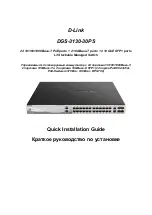
Luno5 light switch manual
www.eledo.pl
5
Fig 5. Connection sockets for direction sensors wires, additional devices, light level regulator and an additional button for manual
on/off control (when the panel is removed).
Electrical wires should be connected to switch according to the description that can be found on figure 6.
Fig. 6 Connecting switch to a 230V electrical network.
L
– 230V phase conductor,
Lo
– Bulb conductor,
N
– Neutral conductor
Luno5 switch can be mounted in an electric box in two ways:
a) by placing the device inside a box and clamping it with clamps that are standard included in a Luno5 set,
b) by placing the device inside a box and clamping it with screws directly to the box threads
– if the box has threaded slots.
This way of assembly is recommended.
Steering wires that come from the switch to direction sensors and other steering elements should be lead outside the electrical
box so that the wires have no contact with 230V lighting network wires. In order to maintain aesthetics, it is recommended to put
the wire in a manner that makes them invisible. You should leave free space next to the place of the switch assembly so you are
able to accumulate space for wires leading to direction sensors and other elements which will ease possible dismantlement of the
switch. Wires that lead to sensors are connected to the controller with a fitting (fig. 14) and to ease assembly you can disconnect
them by gently pulling tape attached to wires collaterally to the plane of the PCB.
Direction sensors should be mounted on door frame sides as fig. 8 shows. You can use double-sided bonding tape to attach them
to the door frame. It can be found on the rear side of the sensors. Sensors need to be placed in pairs on opposite sides and
different heights. It is recommended to put direction sensors that are farther from switch on the side of hinges and the other pair on
the side of the door handle.
First, bottom pair of sensors
– recommended height about 30-65 cm above the floor.
Second, the upper pair of sensors - recommended height about 120-150 cm above the floor.
The difference between the height
o
f b
ottom and the upper pair of the
sensor shouldn’t be smaller than
0.6 m. The height
of the
placement of the sensor has an influence on the accuracy of people counting and if needed can be adjusted to prevailing
conditions
. The inaccurate setting
of the sensors can cause people miscounts
. If the r
oom is often used by e.g. disabled people or
children then it is recommended to put direction sensors lower
.
If the installati
on of the sensors on a door frame is not desirable e.g. because of aesthetics then it is possible to place them
under the door frame as long as you make small 6-mm diameter hole in places corresponding to the sensors active elements
(dark


































